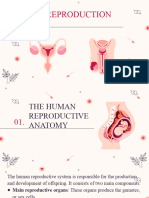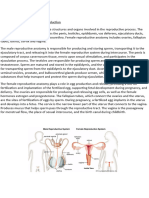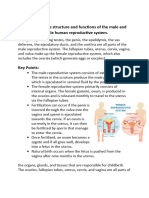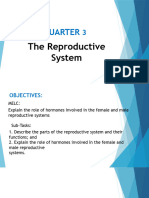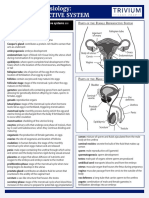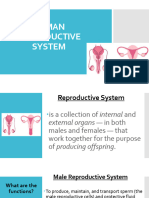0% found this document useful (0 votes)
8 views4 pagesReproductive System
The reproductive system is essential for sexual reproduction, hormone regulation, and overall health. It includes male and female systems with specific organs for gamete production, fertilization, and pregnancy. Additionally, it addresses reproductive health concerns, contraception methods, and hormonal regulation.
Uploaded by
daisykennedy058Copyright
© © All Rights Reserved
We take content rights seriously. If you suspect this is your content, claim it here.
Available Formats
Download as PDF, TXT or read online on Scribd
0% found this document useful (0 votes)
8 views4 pagesReproductive System
The reproductive system is essential for sexual reproduction, hormone regulation, and overall health. It includes male and female systems with specific organs for gamete production, fertilization, and pregnancy. Additionally, it addresses reproductive health concerns, contraception methods, and hormonal regulation.
Uploaded by
daisykennedy058Copyright
© © All Rights Reserved
We take content rights seriously. If you suspect this is your content, claim it here.
Available Formats
Download as PDF, TXT or read online on Scribd
/ 4




















